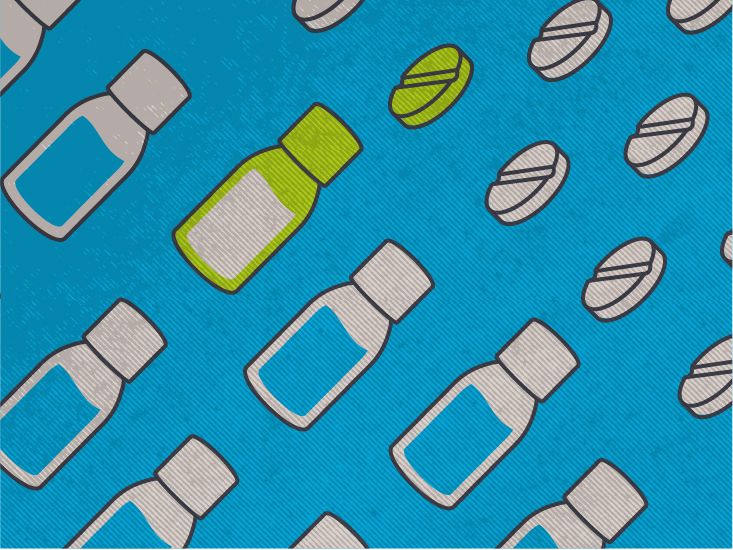If you've ever wondered why sickle cell disease shows up in some families and not others, you're not alone. The short answer is that three big things drive the risk: the genes you inherit, the ancestry you carry, and the everyday triggers that can set off a crisis. Below, I'll walk you through each of these factors, share some reallife stories, and give you practical steps you can take right now. Let's dive in together.
What makes you vulnerable
Think of risk factors as puzzle pieces that fit together to form the bigger picture of sickle cell risk. When you understand each piece, you can see the whole image and start making choices that protect you and your loved ones.
Genetic inheritance the root cause
The sickle cell gene is autosomal recessive, which means you need two copiesone from each parentto develop sickle cell anemia. If you inherit just one copy, you're a carrier (often called "sickle cell trait") and usually feel fine, but you can still pass the gene to your children.
| Parents' Gene Status | Child's Chance of Sickle Cell Anemia (HbSS) | Child's Chance of Trait (HbAS) | Child's Chance of No Gene (HbAA) |
|---|---|---|---|
| Both carriers (AS + AS) | 25% | 50% | 25% |
| One carrier, one noncarrier (AS + AA) | 0% | 50% | 50% |
| One affected, one carrier (SS + AS) | 50% | 50% | 0% |
| Both affected (SS + SS) | 100% | 0% | 0% |
These numbers come straight from the National Heart, Lung, and Blood Institute. A quick conversation with a certified genetic counselor can turn those probabilities into a clear plan for your family.
Sickle cell ancestry why geography matters
People whose ancestors lived in regions where malaria was common carry the sickle gene at higher rates. That includes:
- African (especially West and Central Africa)
- Mediterranean (Italy, Greece, Turkey)
- MiddleEastern (Saudi Arabia, Iran)
- Indian subcontinent
- Some HispanicAmerican groups
For example, the CDC reports that about 1 in 12 AfricanAmerican newborns carries at least one sickle cell gene. That's a big reason why newborn screening is standard in the United States.
Environmental & lifestyle triggers the hidden villains
Even if you have the genes, certain conditions can push sickle cells to "cling together," causing painful vasoocclusive crises (VOC). Common triggers include:
- Dehydration not drinking enough water
- Lowoxygen environments high altitude, airplane cabins
- Extreme temperatures very hot or very cold weather
- Infections especially respiratory or urinary tract infections
- Intense physical exertion without proper hydration
- Pregnancy hormonal and bloodvolume changes
- Stress both physical and emotional
According to a study by the American Society of Hematology, staying wellhydrated and uptodate on vaccinations can cut crisis frequency by up to 40%.
Quick daily checklist
- Drink 810 glasses of water each day.
- Schedule flu and pneumococcal vaccines annually.
- Avoid staying in hot, humid rooms for long periods.
- Take a short break and hydrate during intense exercise.
- Seek prompt medical care for fevers >101.5F.
How risk translates
Now that we've identified the three pillars, let's see how they turn into realworld health outcomes.
Genetic risk severity of disease
People with two sickle genes (HbSS) usually experience the most severe symptoms, while those with HbSC or sicklethalassemia may have milder or more variable disease courses. The Mayo Clinic notes that HbSS patients are at higher risk for stroke, organ damage, and early mortality.
Ancestryrelated impact population statistics
In the United States, there are an estimated 70100k people living with sickle cell disease, the majority being of African descent. This concentration makes community education and early screening especially crucial. The American Society of Hematology emphasizes that targeted publichealth campaigns in highrisk neighborhoods have reduced undiagnosed cases by 15% over the past decade.
Triggerrelated outcomes acute complications
When a trigger hits, sickle cells can block tiny blood vessels, leading to:
- Painful crises (the hallmark "sicklecell pain")
- Acute chest syndrome (a lung emergency)
- Stroke (especially in children)
- Aplastic crisis (temporary bonemarrow failure)
- Kidney problems and gallstones
Recognizing the early signssharp chest pain, sudden shortness of breath, or a high fevercan be lifesaving. Prompt treatment in an emergency department typically involves pain control, oxygen, and sometimes blood transfusions.
Assess your personal risk
Wondering where you stand? Below is a simple, stepbystep selfassessment you can do at home. It's not a diagnosis, but it helps you decide whether a professional opinion is worth scheduling.
Familyhistory questionnaire
Ask yourself (or your relatives) these quick questions:
- Has anyone in your immediate family been diagnosed with sickle cell disease or trait?
- Do you know of any relatives who experienced unexplained severe pain episodes?
- Has anyone in the family had a stroke or organ complications at a young age?
Jot down any "yes" answersyou may want to bring this list to a genetic counselor.
Ancestry checkup
If you're unsure about your ethnic background, consumer DNAtesting services (like 23andMe or AncestryDNA) can give you a rough estimate of African, Mediterranean, or other ancestry percentages. Privacy matters, so read the company's datause policy before you submit a sample.
When to see a professional
Schedule a visit if you notice any of these redflag symptoms:
- Fever above 101.5F that doesn't improve with usual meds
- Sudden, severe chest or abdominal pain
- Unexplained fatigue or weakness lasting more than a few days
- Shortness of breath that feels out of proportion to activity
A simple blood test called hemoglobin electrophoresis can confirm whether you carry the sickle gene. The Mayo Clinic describes the test as quick, painless, and covered by most insurance plans.
Referral to a genetic counselor
When you do get the test results, a genetic counselor can help you interpret the numbers. Here's a quick script you can use when calling:
"Hi, I'd like to schedule a genetic counseling appointment to discuss my hemoglobin electrophoresis results and family planning options. Do you accept my insurance, and what documents should I bring?"
Most hospitals have counselors on staff, and many community health centers offer free or lowcost sessions.
Reducing risk & living well
Having the gene doesn't mean you're doomed to endless hospital visits. With medical advances and everyday habits, many people with sickle cell lead active, fulfilling lives.
Medical prevention
- Hydroxyurea: This medication increases fetal hemoglobin, which helps keep red cells flexible. It's shown to reduce pain crises by up to 50% in many studies.
- Vaccinations: Flu, pneumococcal, and meningococcal vaccines lower infection riska major trigger for crises.
- Regular blood transfusions (for highrisk patients): They can lower the proportion of sickle cells and prevent stroke.
- Folicacid supplements: Support redcell production, especially during growth spurts or pregnancy.
All of these recommendations are backed by the American Society of Hematology's guidelines. Talk to your hematologist about which options suit your situation.
Hydration & environment
Staying hydrated is the simplest yet most effective strategy. Keep a water bottle at your desk, set reminders on your phone, and add a slice of lemon or cucumber to make it more enjoyable.
If you're traveling to high altitudesthink mountain resorts or long flightsplan ahead. Bring an extra water supply, wear breathable clothing, and consider a shortterm oxygen supplement after consulting your doctor.
Nutrition & fitness
Balanced meals rich in fruits, vegetables, whole grains, and lean proteins give your body the nutrients it needs to handle stress. Some people find that lowimpact activities like swimming, yoga, or walking are easier on the joints and still keep them fit.
Case study snippet
Emily, a 16yearold from Georgia, started experiencing three to four pain crises each month. After a thorough review, her doctor emphasized hydration and added hydroxyurea. Within six months, Emily's crises dropped to one or two per month, and she was able to join her school's swim team. "I never realized how much water could change my life," she says, smiling.
Helpful resources
Below are a few trusted sources you can explore for deeper information, support groups, and tools for tracking your health:
- NHLBI Comprehensive guides on sickle cell disease and genetics.
- CDC Newborn Screening Why early detection matters and how it works.
- American Society of Hematology Latest research, treatment guidelines, and patient webinars.
- Rare Disease Advisor Practical tips for managing daily life with sickle cell.
Conclusion
Understanding sickle cell risk factors is like piecing together a puzzle: your genes, your ancestry, and your daily habits each play a crucial role. By getting clear on your family history, staying hydrated, keeping up with vaccinations, and working with knowledgeable healthcare providers, you can dramatically lower the odds of painful crises and live a vibrant, empowered life.
What's your next step? Maybe it's chatting with a family member about their health history, booking a onehour appointment with a genetic counselor, or simply adding an extra glass of water to your daily routine. Whatever you choose, remember you're not alonethere's a community of experts and fellow warriors ready to support you. If you have questions or want to share your story, feel free to leave a comment below. Together, we'll keep the conversation alive and help each other stay healthy.
FAQs
What are the main genetic risk factors for sickle cell disease?
Sickle cell disease is inherited in an autosomal‑recessive pattern: a child must receive two sickle‑cell genes (one from each parent) to develop the disease. Having one copy makes a person a carrier (sickle‑cell trait).
How does ancestry affect the likelihood of carrying the sickle cell gene?
People whose ancestors originated from malaria‑endemic regions—such as West and Central Africa, the Mediterranean, the Middle East, and parts of the Indian subcontinent—have higher carrier rates because the sickle trait offered protection against malaria.
Which lifestyle triggers can cause a sickle cell pain crisis?
Common triggers include dehydration, low‑oxygen environments (high altitude, airplane cabins), extreme temperatures, infections, intense physical exertion without proper hydration, pregnancy, and severe emotional or physical stress.
How can I test for sickle cell trait or disease?
A simple blood test called hemoglobin electrophoresis identifies the presence of sickle hemoglobin. The test is quick, painless, and usually covered by insurance. Newborn screening programs also detect the condition early.
What preventive measures can reduce sickle cell complications?
Staying well‑hydrated, keeping vaccinations up to date (flu, pneumococcal, meningococcal), using medications like hydroxyurea when prescribed, and consulting a genetic counselor for family‑planning advice are key strategies to lower crisis frequency and improve quality of life.
Disclaimer: This article is for informational purposes only and does not constitute medical advice. Always consult with a healthcare professional before starting any new treatment regimen.
Related Coverage
Getting a sickle cell anemia diagnosis early helps prevent complications and opens the door to lifesaving treatments—test today....
Hydroxyurea sickle cell therapy raises fetal‑hemoglobin, halves pain crises, improves organ health; learn dosing, benefits, safety....
Sickle cell prevalence indicates about 8 million people and 100 000 in the U.S. have the disease, guiding care and policy....
Discover the causes, symptoms, diagnosis, and management of sickle cell abdominal pain in this comprehensive guide for individuals living with this debilitating condition....
A bone marrow transplant sickle cell can permanently cure the disease, giving patients freedom from pain crises and organ damage....
Sickle cell complications cause organ damage, painful crises, and stroke risk. Learn symptoms, triggers, and treatment options....
Learn how the genetic mutation behind sickle cell disease causes symptoms, inheritance patterns, and risk factors for families....
Find out how sickle cell inheritance works, who may be affected, and key testing options for families planning their future....
Clear Oxbryta dosage guide with strengths, how‑to take, safety tips, and common side effects for adults and children....
Common Endari side effects, what to watch for, and simple tips to ease discomfort so you can stay on treatment confidently....









